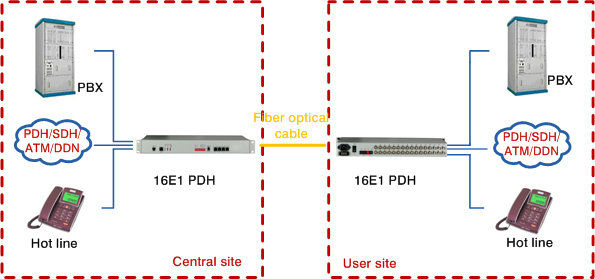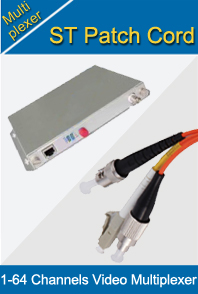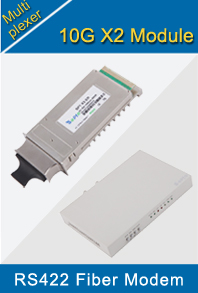-

- Sopto Home
-

- Special Topic
-

- Multiplexer Knowledge
-

- SDH Compared To OTN
Multiplexer Knowledge
- Why is Multiplexing Needed in Data Communication Systems?
- What is Concept of Multiplexing in Telephone System?
- What is Digital TV Frequency?
- Outlook of the WDM Networks
- DWDM Technical Overview
- CWDM Technical Overview
- How to Activate Cable Modems?
- How to Install a Fiber Optic Modem?
- How do I Choose a Best Fiber Modem?
SOPTO Special Topic
Certificate



Guarantee
Except products belongs to Bargain Shop section, all products are warranted by SOPTO only to purchasers for resale or for use in business or original equipment manufacturer, against defects in workmanship or materials under normal use (consumables, normal tear and wear excluded) for one year after date of purchase from SOPTO, unless otherwise stated...
Return Policies
Defective products will be accepted for exchange, at our discretion, within 14 days from receipt. Buyer might be requested to return the defective products to SOPTO for verification or authorized service location, as SOPTO designated, shipping costs prepaid. .....
Applications
Multiplexers can be used to connect PBX, Hot line and other devices of network from central site to user site through fiber optical cable.
SOPTO Products
- Fiber Optic Transceiver Module
- High Speed Cable
- Fiber Optical Cable
- Fiber Optical Patch Cords
- Splitter CWDM DWDM
- PON Solution
- FTTH Box ODF Closure
- PCI-E Network Card
- Network Cables
- Fiber Optical Adapter
- Fiber Optical Attenuator
- Fiber Media Converter
- PDH Multiplexers
- Protocol Converter
- Digital Video Multiplexer
- Fiber Optical Tools
- Compatible
Related Products
Performance Feature
High integration desig
Low power consumption
Good EMC, EMI
Stable and Reliable
Multiplexer Knowledge
Recommended


SDH Compared To OTN
It’s no surprise that OTN has many similarities to SDH, as many of its characteristics were taken from previous technologies when SDH was defined. The similarities include:
- Framing and scrambling
- Layers (path, section)
- Bit-interleaved parity 8 (BIP-8) error monitoring
- Forward and backward error and alarm indications
- Communication channels
- Automatic protection switch (APS) protection signaling
- Byte multiplexing
- Despite all the obvious similarities, there are also some significant differences that result from some lessons learned in the many years of deployment and operation of SDH equipment.

Optical Transport Network
Multi-Operator Networks
The management shortcomings of SDH include poor data integrity and fault isolation methods for multi-operator environments. Whenever a particular end-to-end connection passes through network elements (NEs) in more than one operator network, it is important for each operator to monitor services between the NEs in its own network.
TCM allows the definition of multiple arbitrary pairs of connection monitoring end points so an operator is provided with a single set of alarms and bit-error counts associated with any portion of its network (Fig. 1). Tandem connection was eventually introduced into SDH, but it was cumbersome and not heavily deployed.
Inclusion of FEC
Forward error correction (FEC) is used in transport networks to correct transmission errors that typically occur on long fiber routes. Some SDH equipment with proprietary FEC capabilities (typically for STM-64) has been developed, but deployment is very limited. By contrast, FEC is part of the OTN standard. There also are several proprietary FEC schemes that have better performance than the Reed-Solomon FEC specified in the OTN standard.
Mapping and Multiplexing
When multiplexing SDH containers into higher-rate signals, the payloads of all containers are mapped to a common time base, and a pointer mechanism is used to locate the frame boundary of each payload. In this manner, the section overhead of all SDH containers is aligned and the actual payloads float with respect to each other. Although various administrative group levels are defined in SDH, the multiplexing is effectively single stage.
In OTN, the entire lower-level signal, including overhead and payload, is asynchronously mapped into the payload of the higher-level signal using one of two mechanisms. The first mechanism is the asynchronous mapping procedure (AMP), which allows for small positive or negative frequency offsets of the lower rate signal relative to the higher rate.
The second is the generic mapping procedure (GMP), which allows for almost infinite negative frequency offsets of the lower-rate signal relative to the higher rate. While the OTN originally recommended single-stage multiplexing of containers, multi-stage multiplexing is also now permitted (Fig. 2).
Typical Equipment Platforms
SDH network equipment began primarily with simple terminal multiplexers, which mapped and multiplexed many PDH signals into STM-1, STM-4, and STM-16 transport signals. Add/drop multiplexers (ADMs) were then developed to enable ring topologies and linear add/drop chains.
The multi-service provisioning platform (MSPP) added capability for a larger variety of client signals such as Ethernet and asynchronous transfer mode (ATM). Lastly, these MSPPs evolved into multi-service transport platforms (MSTPs), which typically included DWDM and/or OTN capabilities.
OTN-capable equipment evolved from both the MSPPs of the SDH network as well as the optical ADMs (OADMs) in the DWDM network. The earliest equipment implemented a digital wrapper function where non-OTN signals were simply mapped into OTN prior to transmission to take advantage of the FEC of the OTN protocol.
More recently, the OADM has evolved into a software-reconfigurable version known as the reconfigurable OADM (ROADM). These systems typically have both transponder cards (performing digital wrapper functionality) as well as muxponder cards, which include a multiplexing stage to combine multiple lower-speed signals into a single OTN signal.
The latest transport platform, known as the packet optical transport system (P-OTS), combines transponder and muxponder functions present in the ROADM with OTN container (i.e., ODUj) switching. In many cases, these systems are also capable of packet switching for services such as Ethernet or MPLS to enable a more flexible transport platform designed to natively handle both circuit and packet switching functions.



